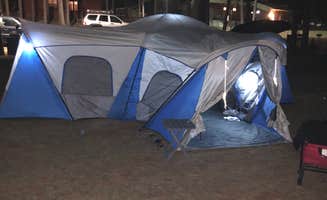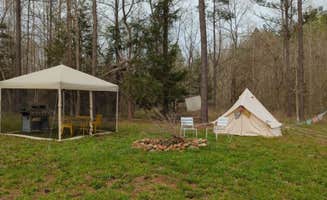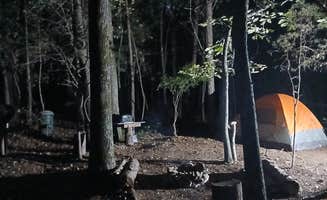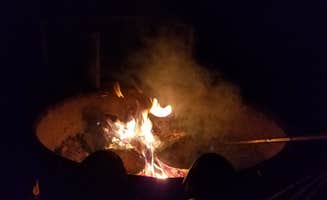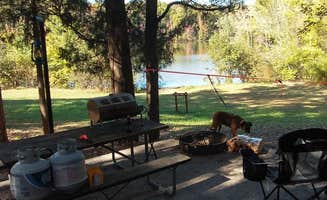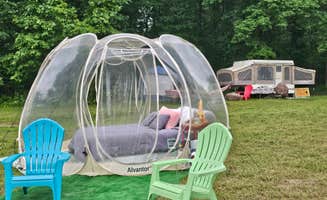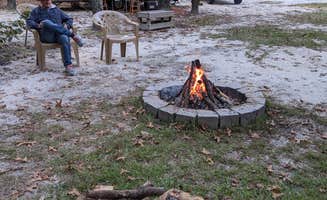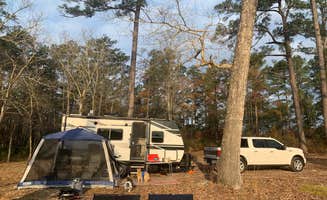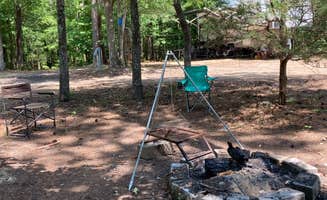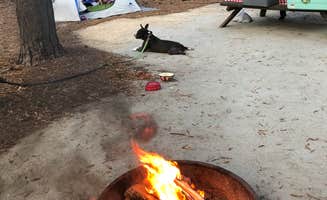Campgrounds near Kershaw, South Carolina range from heavily wooded sites to open lake access points throughout the Sandhills region. Most camping areas sit at elevations between 300-500 feet, creating rolling terrain with sandy soil conditions typical of the Carolina Sandhills ecoregion. Summer temperatures regularly exceed 90°F from June through September, while winter nights can drop below freezing between December and February.
What to do
Boating access points: At Lake Wateree RV Park & Marina, visitors can launch directly from the park's boat ramp. "The beach area is super nice to spend a day on the water with your family," notes Jake, who found the location "amazing" despite higher prices than nearby state parks.
Fishing opportunities: Carolina Sandhills National Wildlife Refuge permits fishing in designated areas with proper licenses. John P. mentions, "Hiking, fishing, and boating are also available, in addition to wildlife watching and nature study," making it a comprehensive outdoor destination for anglers.
Hiking trails: Cane Creek Park offers multiple trail systems suitable for day hikes. Emily B. explains, "A few of the trails are right on the lake and the dogs love to hop in and cool off," highlighting the water-adjacent paths that provide both exercise and cooling opportunities during hot weather.
Mini golf recreation: Cane Creek Park provides complimentary mini golf for registered campers. "The mini golf is free and a blast," states Sarah B., who has visited multiple times. This activity offers entertainment during downtime between other outdoor pursuits.
What campers like
Privacy between sites: Eden in Lancaster provides secluded camping spots with natural buffers. Andrea E. describes it as "a peaceful retreat" and "a great weekend escape from city life," noting the separation from neighboring campers enhances relaxation.
Clean facilities: Consistent maintenance of bathhouses receives frequent praise across multiple campgrounds. Robert D. observes about Cane Creek Park: "The campground is clean and well-maintained. The bathhouse is in good shape and clean," highlighting standards that remain consistent even during busy periods.
Lake swimming areas: Several campgrounds feature designated swimming zones with gradual entry points. At Lake Wateree State Park, Jen G. appreciated that "The water is pretty shallow, so the littlest ones had plenty of space to play and swim without us having to worry," making it suitable for families with young children.
Lakefront sites: Sesquicentennial State Park offers several water-adjacent camping spots. L.O. notes the "amazing aroma of pine is one of the natural highlights," creating a sensory experience beyond just visual lake views.
What you should know
Limited cell coverage: Digital connectivity varies significantly throughout the region. A Cane Creek Park visitor mentions that during their stay, there was "No WiFi and rarely did we have cell service but that's not a bad thing!" This unplugged experience benefits those seeking to disconnect.
Seasonal flooding risks: Low-lying areas near water can become saturated after heavy rains. Jeanette M. observed at Cane Creek that "both times we visited there was a storm and power went out for hours," suggesting weather preparedness is essential.
Distance from supplies: Many campgrounds require advance planning for provisions. Campers at Andrew Jackson State Park recommend bringing all necessary supplies as Laura A. notes the park is "located approximately 20 miles from Rock Hill and 30 miles from Charlotte," indicating significant travel time to retail areas.
Wildlife encounters: Local fauna includes various snake species. At Sesquicentennial State Park, one visitor mentioned being able to "enjoy the trails and spotting dear [sic]," while Nate G. warns about "abundant wildlife including copperheads" at Andrew Jackson State Park, emphasizing awareness during hiking.
Tips for camping with families
Shallow swimming zones: Waterfront areas with gradual depth changes provide safer experiences for children. Harry H. at Lake Wateree State Park appreciated that "Sites are very shady and every site is surrounded by trees, so you don't feel very close to the other campers," creating natural play boundaries.
Playground access: The Farm Campground includes child-friendly play equipment near camping areas. John P. lists the amenities: "Laundry, kitchen, playground, commons area with a tiki bar," making it suitable for extended family stays with varied activities.
Holiday activities: Some parks organize special events during peak periods. Sarah B. mentions that at Cane Creek Park, "Holidays usually have some activities for kids," providing structured entertainment beyond standard outdoor recreation.
Educational opportunities: Carolina Sandhills National Wildlife Refuge allows group camping specifically for educational purposes. Janet R. explains, "School groups and youth groups are welcome to visit the preserve for ranger led programs and can stay overnight at special rustic group campsites," though permits are required in advance.
Tips from RVers
Site leveling needs: Several campgrounds feature sloped terrain requiring adjustments. Rachel R. at Andrew Jackson State Park notes, "Our site was very steep, so took a lot to get level, but it was ok," suggesting bringing leveling blocks for uneven surfaces.
Campground access roads: Some locations have challenging approach routes. Gary D. describes The Farm Campground: "After you drive down a long sandy rutty road you come to the farm. A little oasis for the road weary," indicating larger rigs should proceed with caution.
Electric limitations: While most parks offer power hookups, amperage varies significantly. Kevin A. found Lake Wateree State Park sites to be "right on the lake, paved, spacious, clean, well maintained with fire pits, water, electric and picnic tables," providing the essential RV amenities despite not specifying amperage details.


